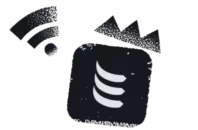What is UDH (User Data Header)?
In the context of telecommunications, UDH stands for User Data Header. It is a field that is present in SMS (Short Message Service) messages. The User Data Header is used to carry additional information or instructions related to the SMS message.
The User Data Header is a part of the SMS protocol and is located before the actual message content. It is primarily used to enable certain features or functionalities in SMS messages. The header consists of a series of octets (8-bit bytes) that contain specific parameters and data.
The information carried in the User Data Header can vary depending on the purpose and requirements of the SMS message. It can include details such as special character encoding, message class, message type indicators, message concatenation, and more. These parameters help define how the SMS message should be processed or displayed on the recipient’s device.
By utilizing the User Data Header, mobile network operators and service providers can enhance the functionality and versatility of SMS messages beyond simple text-based communication. It allows for the inclusion of various features and options to enrich the messaging experience.
It’s worth noting that the User Data Header is not visible to the end-user, as it is handled by the messaging infrastructure and devices. It serves as a mechanism for enabling additional capabilities and ensuring compatibility between different SMS systems and devices.
What is the difference between User Data Header and Payload Data?
The User Data Header (UDH) and Payload Data are two distinct components of a message, particularly in the context of telecommunications protocols such as SMS (Short Message Service) or certain data transmission formats. Here’s the difference between them:
User Data Header (UDH): The User Data Header is a section that precedes the actual content of a message. It contains additional information or instructions related to the message. In the case of SMS, the UDH is used to enable specific features or functionalities, such as message concatenation (when a long message is split into multiple parts) or special character encoding. The UDH is typically not visible to the end-user and is primarily used by the messaging infrastructure and devices to process and interpret the message correctly.
Payload Data: The Payload Data refers to the actual content or information that is being transmitted within the message. It is the main body of the message and carries the intended data, whether it’s text, multimedia, or other forms of information. In an SMS message, the Payload Data represents the text that the sender wishes to convey to the recipient. Unlike the UDH, the Payload Data is visible to the end-user and is the meaningful content of the message itself.
